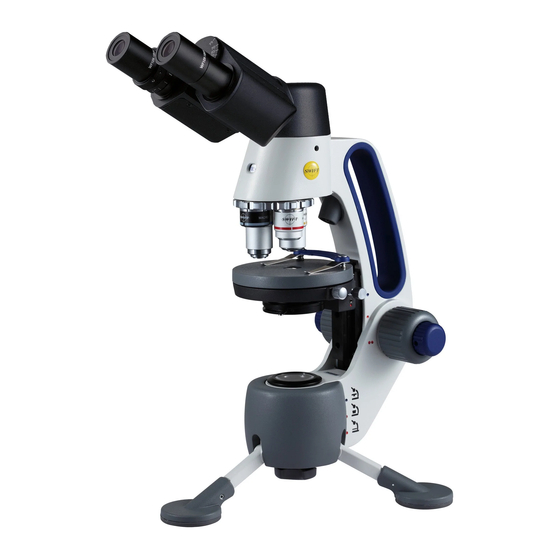
Advertisement
Swift M3 Microscope
The Swift M3 is a versatile microscope designed for both microscopic (high
magnification, small field of view) and macroscopic (low magnification,
large field of view) applications. Micro/macro optical capability combined
with an innovative modular stage design produce a sophisticated
instrument designed to perform for many years in numerous applications.
The M3 is equipped with an adjustable stage that allows the viewing mode
to be changed. The microscope stage can be placed in the uppermost
position, the "micro" mode, or by lowering the stage to its middle or lowest
position in can be placed in the "macro" mode.
The M3 is equipped with multiple stage inserts for observation of
specimens which include a stage plate with an integrated 0.65 N.A.
condenser for microscopic use and an optically clear specimen cup or a
black/white contrast plate for macroscopic use. The M3 features top and
bottom rechargeable LED illumination for cordless operation both indoors
and out.
Advertisement
Table of Contents

Summary of Contents for Swift M3
- Page 1 The M3 is equipped with an adjustable stage that allows the viewing mode to be changed. The microscope stage can be placed in the uppermost position, the “micro”...
- Page 3 First brush with a soft, camel hair brush or blown off with clean, oil-free air to remove dust particles. Then wipe gently with a soft BASE – attaches to the bottom of the M3 with a thumb screw located lens tissue, moistened with optical cleaner (eyeglass or camera lens) or underneath the tripod base.
- Page 4 Other Important Terminology Step 9: (M3-B only) Set the diopter adjustment, which is designed to help compensate the difference between the user’s eyes. To adjust, first bring “COATED” LENS – in attempting to transmit light through glass, much specimen into perfect focus by using the coaxial focusing knobs while of the light is lost through reflection.
- Page 5 It may range in diameter from several millimeters to less than 0.1mm, depending on the level of magnification. Step 9: (M3-B only) Set the diopter adjustment which is designed to help compensate for the difference between the user’s eyes. To adjust, first FOCAL LENGTH –...
- Page 6 Be sure the objective “clicks” into position. The iris diaphragm should be adjusted at this time to about a ¼ inch (5 mm) open. Step 7: (M3-B only) Adjust the Siedentopf binocular head (by moving the eyepiece tubes up and down in an arc-like motion, similar to adjusting...















Need help?
Do you have a question about the M3 and is the answer not in the manual?
Questions and answers